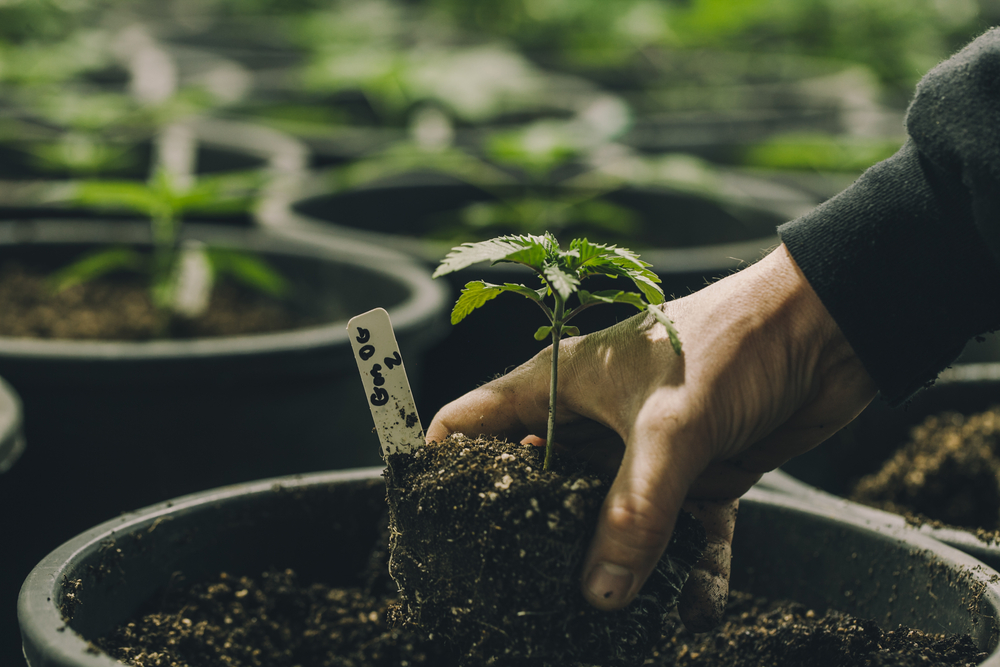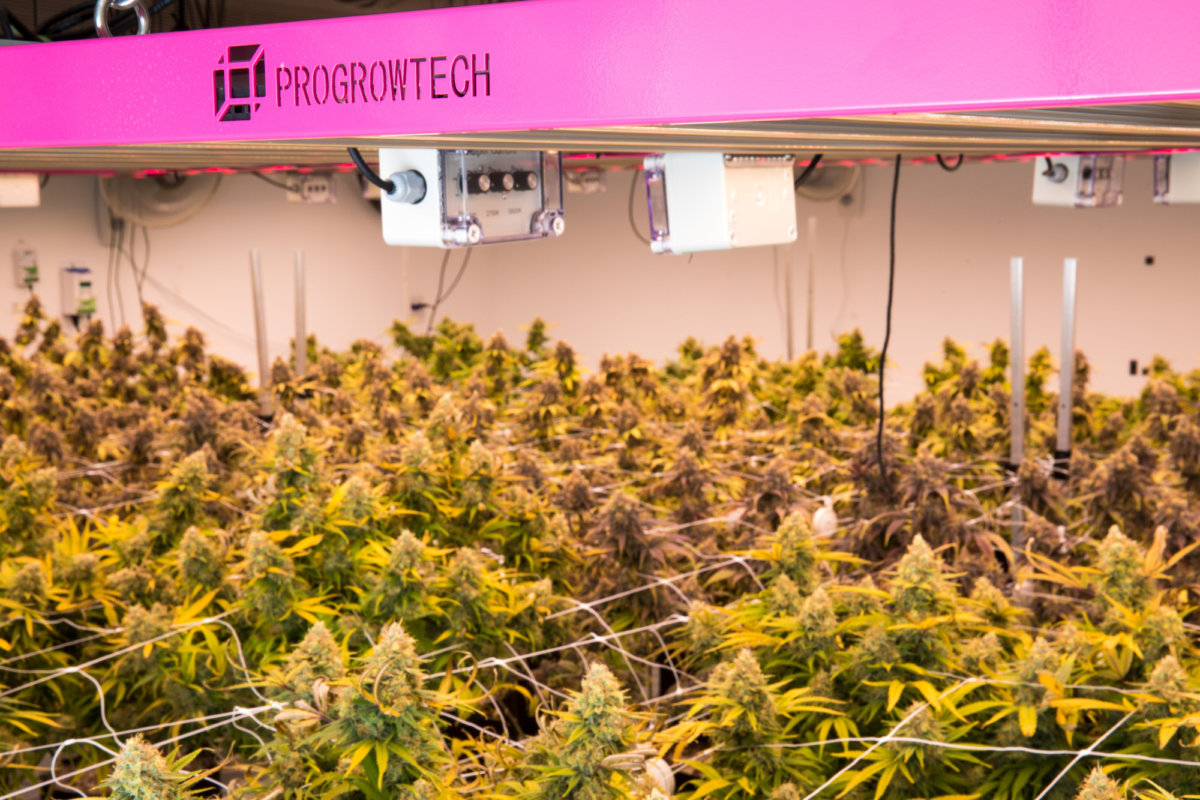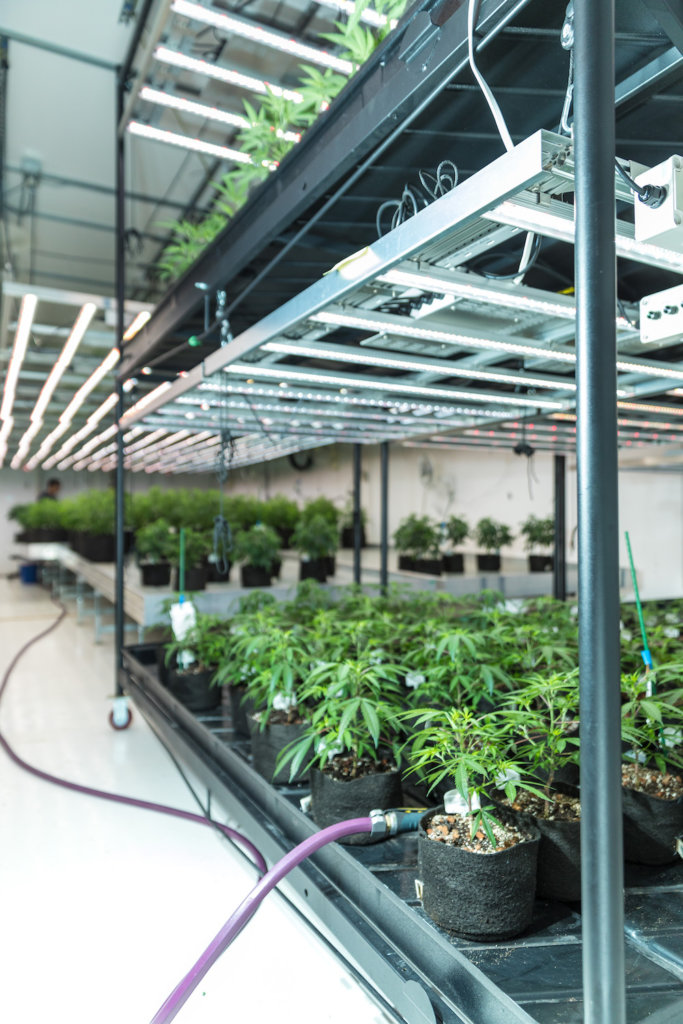Member Blog: Sustainable, Indoor-Grown Cannabis Starts with LEDs

By Andrew Myers, President & CEO of ProGrowTech
Despite cannabis’s down-to-earth appeal, it hasn’t been as friendly to the earth as one might assume. But cannabis growers have always been resourceful, and with recent developments in technology and improved growing methods – including full-spectrum LED grow lights – the cannabis industry is becoming increasingly sustainable. The end results? A healthier environment, better products and a notable cost reduction. It’s a win-win-win.
Cannabis’s Carbon-Intensive Past
Between staggering electricity usage, a ballooning carbon footprint, a habitually gratuitous use of pesticides and toxic runoff decimating local ecosystems, the cannabis industry hasn’t been the best steward of the environment. As more states pass adult-use and medical laws across the country, this seemingly blameless plant has come under scrutiny from environmentalists, consumers and policy-makers alike.
Evan Mills, Ph.D., is regarded as one of the leading minds in cannabis industry sustainability issues. A California-based energy and climate change scientist, he authored a landmark and frequently cited report in 2012, “The carbon footprint of indoor Cannabis production,” highlighting the cannabis industry’s not-so-green track record. The report devotes a few hefty paragraphs to indoor lighting needs at cultivation sites. Primary takeaways include:
- Indoor cannabis production requires lighting levels 500-times greater than that recommended for reading.
- Cultivation sites power densities are measured at 200 W/m2, on par with modern datacenters.
- Grow facilities nationwide consume the same amount of electricity as two million average American homes.
- A single cannabis cigarette, according to Mills’ calculations, is equivalent to 3 pounds of carbon dioxide emissions.
The data is clear: without adjusting equipment and techniques, the cannabis industry was on track to becoming one of the largest carbon emitters in the world. And amidst growing calls for improved business transparency and environmentally conscious methods (that have only gotten louder in recent years), cannabis businesses were desperate for solutions that matched performance with sustainability.
The LEDs of Today
Many outdated lighting technologies like HPS and fluorescents consume exorbitant amounts of energy for sub-par output, run hot (and therefore place additional pressure on environmental controls like HVAC and AC) and tend to burn out quickly. These technologies can leave many growers wondering if it’s worth the trouble – and encourage them to make the switch to LEDs.
While LEDs have certainly been around for a while, they’ve gained traction among cannabis growers more recently. At one time, large installations of LEDs needed at commercial grow operations were highly cost prohibitive, only allowing the biggest enterprises to reap the benefits. But, over time, LEDs have become increasingly affordable and accessible to smaller businesses, start-ups and hobbyists. Moreover, the technology has improved drastically.
Today’s cutting-edge LED grow lights come with built-in features leading to better performance paired with lower costs and emissions for the modern grower.
- Unparalleled Efficacy and Efficiency
LED grow lights today are able to deliver unmatched uniformity, ensuring every plant in your canopy receives adequate photosynthetically active radiation. They also use less energy while delivering plenty of brightness – meaning you’ll cut electricity costs and emissions without seeing a dip in performance. - Full-Spectrum Light and Spectral Tuning
Wish you could bring the sun indoors? Invest in LEDs – they’re the closest thing to sunlight you can find because they deliver full-spectrum light. Your plants can benefit from the full range of spectrum as they would in their natural environment. Further, features like spectral tuning give cultivators ultimate control, allowing them to elicit certain biological responses, hasten flowering and shorten the growing cycle altogether. - Vertical Racking
This capability, made available with some modern LEDs, can double or even triple your harvests without investing in additional square footage. Vertical racking allows growers to use their spaces in the most efficient way possible, resulting in verdant, multi-level gardens. - Automation
Automating light cycles, watering and even nutrient distribution can cut down on labor-intensive tasks and human error that can result in additional, unnecessary energy usage. By pre-programming the necessary functions of your grow, growers are given peace-of-mind and can focus on other important tasks that require more of a human touch. - Low Heat Profile and On-Board Dimming
A huge selling point for growers of all kinds, LEDs have a much lower heat profile than other lighting technologies. They present less of a risk for heat stress, reduce reliance on other environmental controls and can be placed much closer to the plant canopy (a plus when vertical racking!). On-board dimming is a helpful feature as well: growers can create an artificial sunrise and sunset to gently ease their plants into light-dark cycles and prevent spikes in both temperature and humidity. - Improved Durability
LEDs are built to last, another selling point for environmentally conscious cultivators looking to cut down on waste. If you’re in the market for some new efficient grow lights, look for LEDs that are built with industrial-grade materials and come with the IP66 or IP65 waterproofing certification.
Looking Toward a Bright, Green Future
Cannabis has become a regular facet of countless American lives. It helps people relax and de-stress, mitigate crippling pain and calm seizures. In 2018, the Pew Research Center reported that 62% of Americans are in favor of legalizing cannabis. The once-villainized plant, long at the center of fear-mongering campaigns like reefer madness and gateway drugs, is now widely enjoyed by everyone from politicians to grandparents to entrepreneurs to professional athletes. It’s not going anywhere any time soon.
That means that cannabis industry professionals have a responsibility to produce cannabis with sustainable methods – and LEDs are a great place to start. Not only do LEDs help shrink your business’s carbon footprint, they can also save you money in the long run and boost profits. There are countless growers today who prefer using LEDs, and it’s pretty easy to understand why.
 Andrew Myers is President and CEO of ProGrowTech, which helps commercial horticulture operations increase profitability, yield and energy efficiency with industry-leading LED lighting systems. For more information, visit progrowtech.com.
Andrew Myers is President and CEO of ProGrowTech, which helps commercial horticulture operations increase profitability, yield and energy efficiency with industry-leading LED lighting systems. For more information, visit progrowtech.com.


 Vertical farming has revolutionized the way we think about indoor agriculture. With the advancement of vertical racking, growers can amplify their harvests — sometimes multiplying their crops ten-fold — without having to invest in more square footage.
Vertical farming has revolutionized the way we think about indoor agriculture. With the advancement of vertical racking, growers can amplify their harvests — sometimes multiplying their crops ten-fold — without having to invest in more square footage. Andrew Myers is President and CEO of
Andrew Myers is President and CEO of